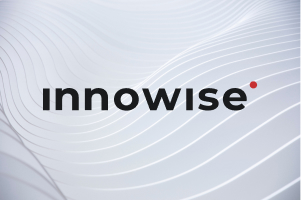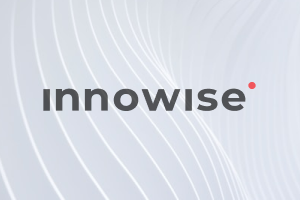Your message has been sent.
We’ll process your request and contact you back as soon as possible.
The form has been successfully submitted.
Please find further information in your mailbox.


We build fit‑for‑purpose biotech systems that accelerate discovery, de‑risk operations, and turn fragmented data into defensible insights across the lab-to-market continuum.
We build fit‑for‑purpose biotech systems that accelerate discovery, de‑risk operations, and turn fragmented data into defensible insights across the lab-to-market continuum.
Every biotech organization faces one challenge: turning complex science into dependable software that moves research forward. Our services translate bench‑level needs into scalable and compliant systems.
Defining an actionable roadmap that aligns scientific goals, compliance constraints, and budget. Deliverables typically include capability gaps, architecture options (cloud/on‑prem/hybrid), buy‑vs‑build recommendations, and a phased plan that unblocks near‑term wins while de‑risking scale.
Designing, building, and validating bespoke applications around your workflows — from research ELNs and assay portals to production‑grade platforms. Expect modular architectures, auditable data trails, and UX your bench scientists will actually use, all delivered with Agile cadences and sprint demos to keep stakeholders aligned.
Operationalizing AI where it moves the needle: target discovery, virtual screening, ADME/Tox prediction, genomics, and imaging. We set up reproducible pipelines (feature stores, model registries, monitoring) so models are explainable and versioned and then embed results into your tools to augment human decision‑making.
Connecting instruments and systems so data flows without manual re‑entry. We integrate LIMS, ELN, CTMS, MES/ERP, and EHR via APIs/SDKs; map HL7/FHIR where clinical exchange is needed; and enable IoT telemetry for device uptime and calibration tracking — reducing clickwork and error rates while raising traceability.
Implementing clean, governed data pipelines that ingest from instruments, LIMS/ELN, EDC, and public datasets; and modeling that data for analysis. We surface insights via role‑based dashboards (e.g., PI, lab manager, QA), cohort explorers, and drill‑downs so teams spot trends and make confident calls without exporting to spreadsheets.
Implementing access controls, encryption, audit trails, e‑signatures, and change control aligned to FDA 21 CFR Part 11, HIPAA/GDPR, CLIA, and ISO 13485. Validation packages (IQ/OQ/PQ), SOPs, and risk assessments are produced as part of delivery so audits become routine, not an afterthought.
Refactoring or re‑platforming legacy tools to cloud‑ready microservices and resilient UIs without losing institutional knowledge. We preserve data lineage, deprecate brittle components, and introduce improvements to extend the lifespan of critical systems and reduce total cost of ownership.
Whether you need to build a greenfield platform or evolve your existing software, these are the solutions we deliver most often, each enhanced with practical AI where it delivers measurable value.
Building configurable LIMS that automate sample intake, chain‑of‑custody, plate maps, inventory, and QC. AI assists with anomaly detection (e.g., out‑of‑range results), instrument health, and workload forecasting; barcode/RFID and role‑based permissions ensure end‑to‑end traceability.

Implementing pipelines for assay setup, curve fitting, normalization, and result review with guardrails and review/approve workflows. ML models flag outliers, predict assay drift, and recommend repeats, compressing turnaround time while lifting confidence in reported values.

Developing CTMS with site/startup tracking, visit schedules, issue management, and KPIs. Predictive analytics support enrollment planning and risk‑based monitoring; integrations with EDC, eTMF, and safety systems remove manual reconciliation and improve inspection readiness.

Delivering ELNs with structured templates, embedded data capture, reagent lookup, and compliant e‑signatures. NLP auto‑tags entries, suggests related experiments, and surfaces prior art so teams reuse knowledge instead of reinventing it.

Building scalable pipelines for sequencing, alignment, variant calling, expression profiling, and proteomic quantification. AI/ML highlights significant variants, pathways, and biomarker candidates; cohort analytics and permissions keep PHI secure while enabling collaboration.

Building virtual screening, molecular modeling, de novo design, and QSAR/ADMET prediction workflows on HPC/GPU backends. Generative models propose candidates within synthetic constraints; docking/scoring and MD simulations help prioritize hits and reduce wet‑lab iteration.

Creating analysis suites for targeted panels and WES/WGS with automated QC, variant interpretation, and report generation. Knowledge‑base linking (ClinVar, gnomAD, COSMIC) and AI‑assisted classification speed up variant review and reduce VUS churn.

Engineering clinician‑ and patient‑facing apps for test ordering, device connectivity, and longitudinal monitoring. Models support earlier detection and triage, while audit trails and consent management satisfy regulatory expectations.

Delivering pipelines for microscopy/HCS, MRI/CT, and histopathology with robust segmentation, registration, and quantification. AI models accelerate cell counting, phenotype clustering, and anomaly detection; viewers are optimized for large tiled images and collaborative review.

Implementing end‑to‑end specimen tracking across collection, storage conditions, thaw/refreeze cycles, and disposal. Forecasting models predict depletion and storage demand; alerts assist with stability windows and environmental deviations to protect sample integrity.

Building configurable LIMS that automate sample intake, chain‑of‑custody, plate maps, inventory, and QC. AI assists with anomaly detection (e.g., out‑of‑range results), instrument health, and workload forecasting; barcode/RFID and role‑based permissions ensure end‑to‑end traceability.

Implementing pipelines for assay setup, curve fitting, normalization, and result review with guardrails and review/approve workflows. ML models flag outliers, predict assay drift, and recommend repeats, compressing turnaround time while lifting confidence in reported values.

Developing CTMS with site/startup tracking, visit schedules, issue management, and KPIs. Predictive analytics support enrollment planning and risk‑based monitoring; integrations with EDC, eTMF, and safety systems remove manual reconciliation and improve inspection readiness.

Delivering ELNs with structured templates, embedded data capture, reagent lookup, and compliant e‑signatures. NLP auto‑tags entries, suggests related experiments, and surfaces prior art so teams reuse knowledge instead of reinventing it.

Building scalable pipelines for sequencing, alignment, variant calling, expression profiling, and proteomic quantification. AI/ML highlights significant variants, pathways, and biomarker candidates; cohort analytics and permissions keep PHI secure while enabling collaboration.

Building virtual screening, molecular modeling, de novo design, and QSAR/ADMET prediction workflows on HPC/GPU backends. Generative models propose candidates within synthetic constraints; docking/scoring and MD simulations help prioritize hits and reduce wet‑lab iteration.

Creating analysis suites for targeted panels and WES/WGS with automated QC, variant interpretation, and report generation. Knowledge‑base linking (ClinVar, gnomAD, COSMIC) and AI‑assisted classification speed up variant review and reduce VUS churn.

Engineering clinician‑ and patient‑facing apps for test ordering, device connectivity, and longitudinal monitoring. Models support earlier detection and triage, while audit trails and consent management satisfy regulatory expectations.

Delivering pipelines for microscopy/HCS, MRI/CT, and histopathology with robust segmentation, registration, and quantification. AI models accelerate cell counting, phenotype clustering, and anomaly detection; viewers are optimized for large tiled images and collaborative review.

Implementing end‑to‑end specimen tracking across collection, storage conditions, thaw/refreeze cycles, and disposal. Forecasting models predict depletion and storage demand; alerts assist with stability windows and environmental deviations to protect sample integrity.


Tell us what you’re building, and we’ll return a concise architecture outline, timeline, and validation approach tailored to your existing ecosystem.
Owning the right software should remove friction, not add it. The following benefits are baked into how we design and deliver.
IP rights ownership
Retain full ownership of source code and documentation, eliminate vendor lock‑in and evolve the solution on your own terms as your science and business change.
Scalability
Start small, scale fast — our architectures support bursty workloads, multi‑site rollouts, and growing data volumes without surprise rewrites or performance cliffs.
Security and compliance
Protect sensitive clinical and research data through layered security (encryption, least‑privilege access, audit logs, MDR), with validation and SOPs aligned to the standards your auditors expect.
AI‑enhanced data insights
Turn raw outputs into signal with embedded analytics and ML providing predictions, rankings, and quality cues so teams make faster decisions and focus on higher‑value work.
IP rights ownership
Scalability
Security and compliance
AI‑enhanced data insights
From early‑stage biotech to global enterprises and public health, we tailor delivery models and architectures to your context.
Process drives predictability. At Innowise, we use a rigorous, compliant lifecycle so releases are reliable, auditable, and useful from day one.
Clarifying goals, users, data sources, and constraints; then mapping current workflows and defining measurable success criteria. Outputs include a backlog, risks, and a validation plan.
Selecting cloud/on‑prem/hybrid targets, security controls, and data models; producing UI wireframes and API contracts. We plan sprints and milestones with clear acceptance criteria.
Implementing features iteratively with CI/CD, code reviews, and automated tests. We integrate instruments and external systems (LIMS/ELN/EDC/MES/EHR) and provide sprint demos to keep teams aligned.
Running functional, performance, and usability tests; executing validation (IQ/OQ/PQ) and traceability matrices. Findings are documented for inspection readiness.
Rolling out to production environments, migrating legacy data with reconciliation, and verifying integrations. We support pilots/UAT to de‑risk cutover.
Delivering role‑based training, SOPs, and admin playbooks so teams are productive from the start. Feedback is captured for the next iteration.
Operating with SLOs/SLAs, patching, and scaling resources. We roadmap enhancements and model monitoring (drift, bias) to keep solutions accurate and compliant.

We’ll show you artifacts (backlogs, validation packs, SOPs) from anonymized projects so you can see the rigor before we start.
Discover how our expertise translates into measurable business and scientific outcomes
You get a senior team that speaks both science and software, and can prove it in delivery.
Drawing on 18+ years in software development and a dedicated biotech engineering group, we combine data experts, ML scientists, and regulated‑software developers with SMEs who understand assays, QC, and compliance. You gain a partner fluent in both biotech and code.
We leverage AI to augment human expertise. Predictive models and automation are applied only where they produce measurable lift, while MLOps practices keep them reproducible, monitored, and compliant. This ensures innovation with control and clarity.
Quality and safety are built into every step of the software development lifecycle. We design for GxP, 21 CFR Part 11, HIPAA/GDPR, and ISO 13485 compliance from project inception, delivering validation artifacts and SOPs so you stay inspection‑ready without added overhead.
Our integrations are engineered for reliability and transparency. Using stable APIs/SDKs, HL7/FHIR standards, and resilient data models, we ensure your systems communicate seamlessly and preserve full lineage and provenance across platforms.
Whether you need a dedicated team or fixed‑scope delivery, we adapt to your risk profile and internal capacity. Every engagement includes transparent reporting, full IP ownership, and a smooth knowledge transfer so you stay in control.

It was a very intense and effective collaboration, all the developers were focused on the goals and prepared about all the technologies we cover.

What I found most impressive about Innowise was their ability to adapt to our specific needs while maintaining strict timelines. They combined a customer-centric approach with strong project management skills, ensuring that deliverables were of high quality and on time.

We are impressed with their flexibility and willingness to find solutions for challenging situations. They actively assisted in every kind of situation. The team's willingness to deliver optimal results ensures the partnership's success.
We implement layered security: encryption in transit/at rest, least‑privilege access, MFA, network segmentation, and continuous monitoring. We operate under ISO‑aligned processes and conduct regular penetration testing and audits.
Compliance is woven into requirements, design, and testing. We align with FDA, EMA, HIPAA/GDPR, CLIA, and 21 CFR Part 11, and provide validation packs (IQ/OQ/PQ), traceability matrices, and SOPs to pass inspections without last‑minute scrambles.
Yes. We integrate via vendor SDKs/APIs and established standards, connecting instruments, ELN/LIMS, CTMS/EDC, MES/ERP, and (where relevant) EHR systems to eliminate double entry and ensure clean lineage.
Absolutely. We tailor scopes and architectures to stage, from lean MVPs that hit fundraising milestones to multi‑site rollouts with strict validation.
We support dedicated teams, staff augmentation, and fixed‑scope delivery. All models include IP ownership and knowledge transfer.
Feel free to book a call and get all the answers you need.
Book a callYour message has been sent.
We’ll process your request and contact you back as soon as possible.